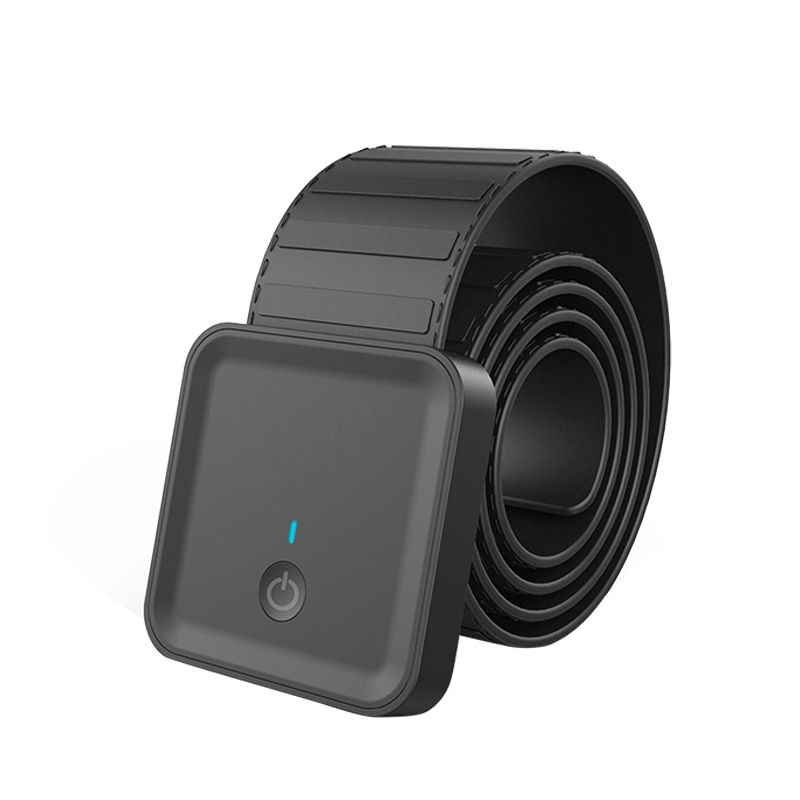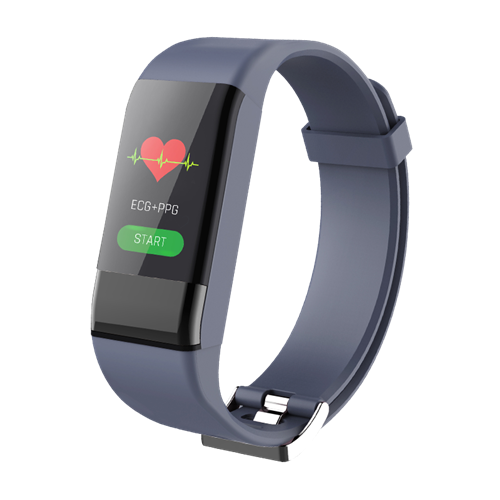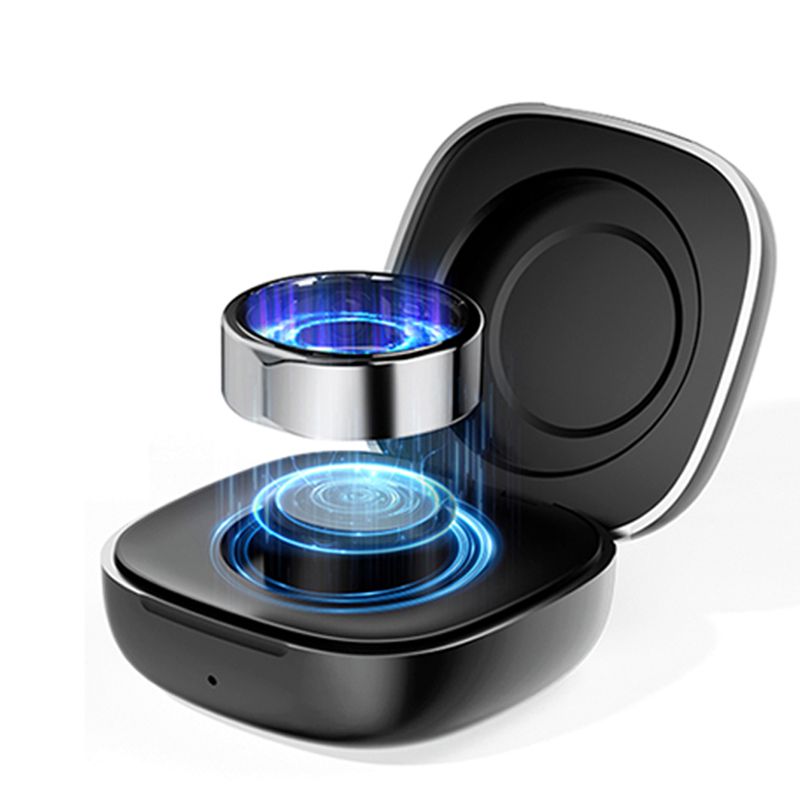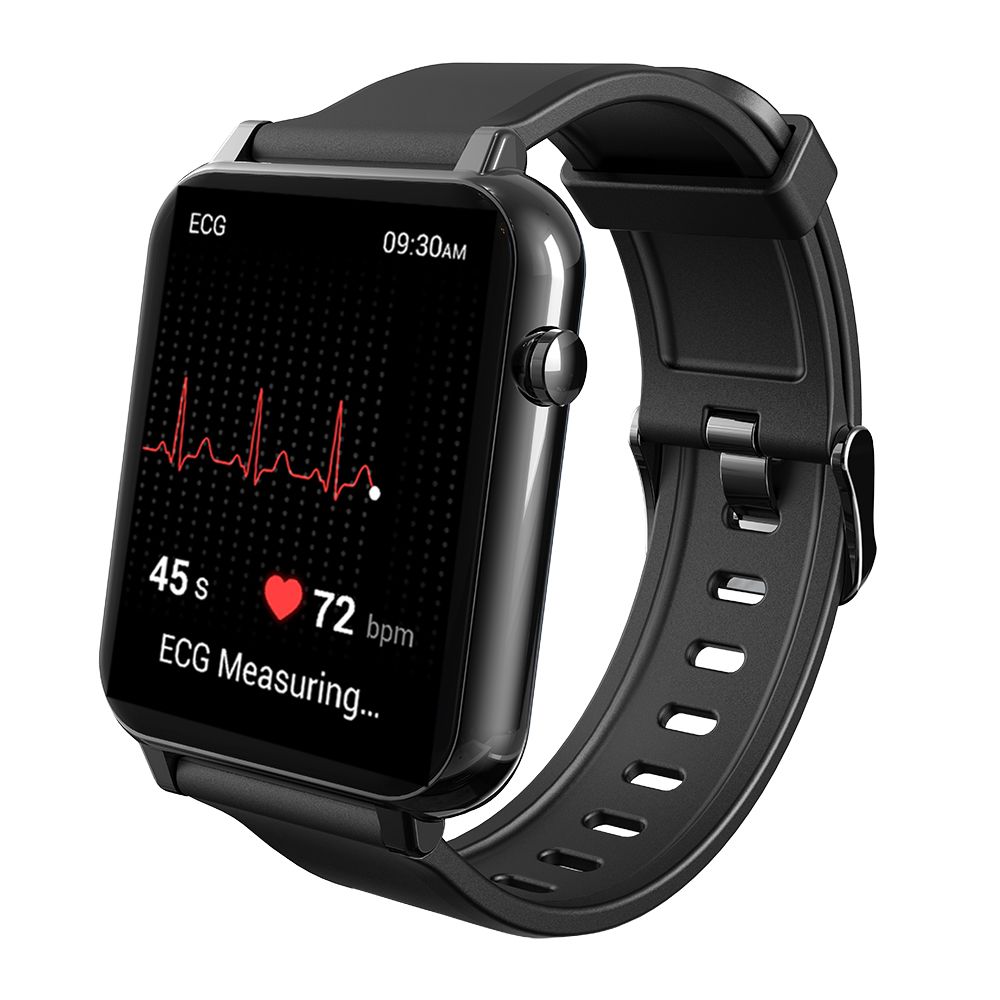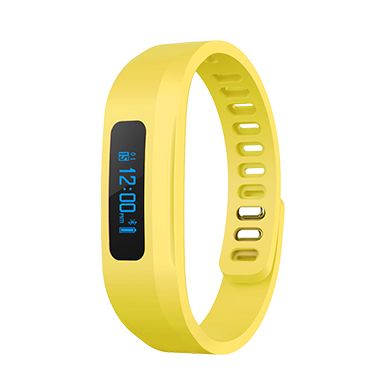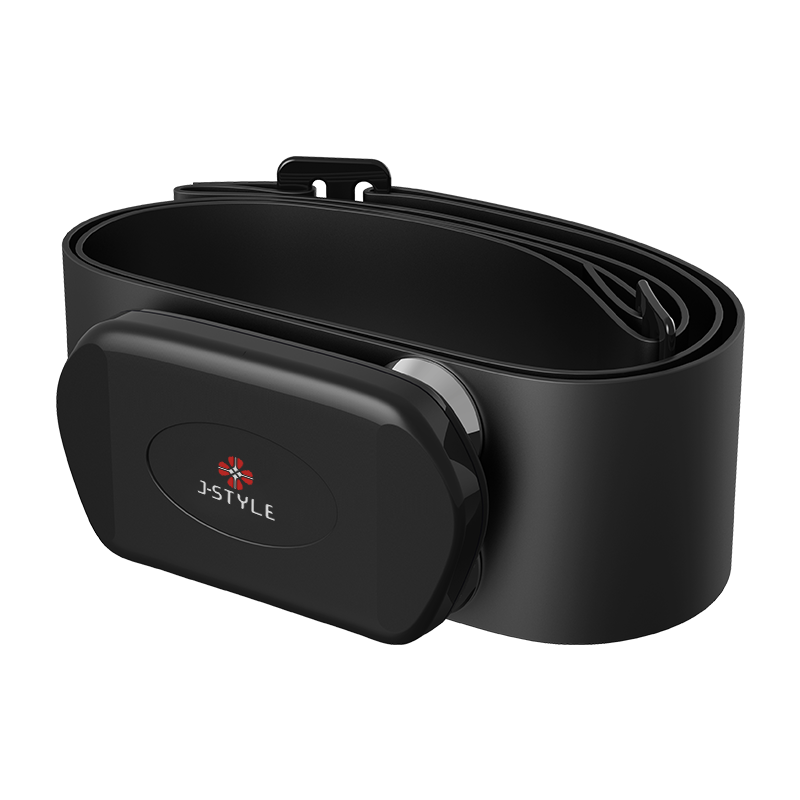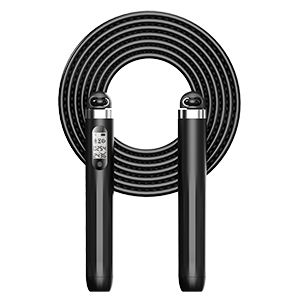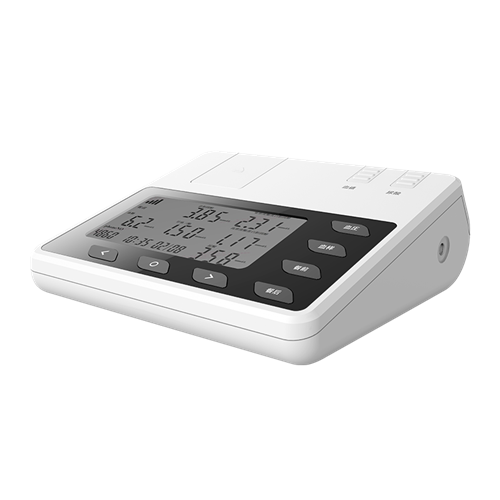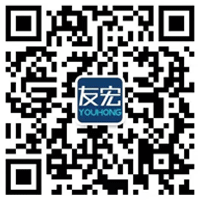Global population aging is accelerating, and with it comes a rapid rise in chronic diseases such as hypertension, diabetes, cardiovascular disease, COPD, and cognitive decline. According to the World Health Organization (WHO), by 2050 the number of people aged 60 and above will reach 2.1 billion, nearly double today’s population. In China, the elderly population will exceed 300 million during the “14th Five-Year Plan” period, accounting for more than 20%.
As elderly populations grow, healthcare systems are under immense pressure. Traditional elderly care models—centered around hospital visits and periodic checkups—are struggling to meet new demands for continuous monitoring, cost efficiency, and personalized care.
This is where Smart Elderly Care combined with wearable technology (such as smart rings, smart bands, and smart watches) reshapes the future of chronic disease management.
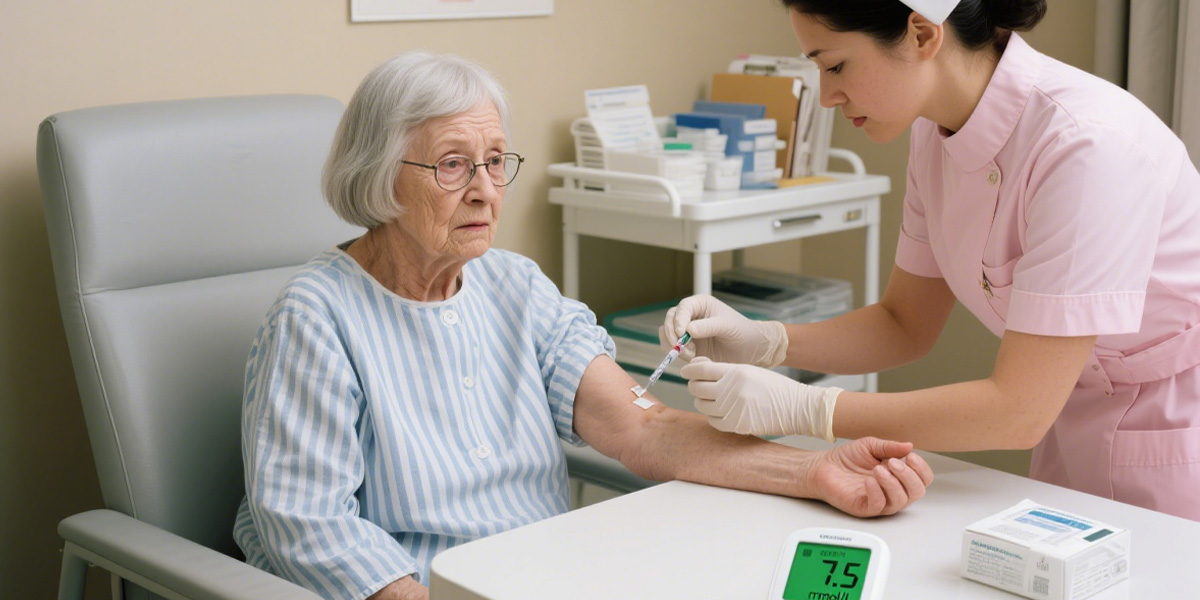
Challenges of Traditional Elderly Care and Chronic Disease Management
Despite advancements in healthcare, traditional elderly care still faces several pain points:
● Lack of continuous monitoring: Hospital-based checkups only provide snapshots, missing daily fluctuations in vital signs.
● High cost of chronic disease care: The CDC reports that 90% of the U.S.’s $4.1 trillion annual healthcare expenditure goes to chronic diseases and mental health.
● Shortage of caregivers: The World Bank predicts a global shortage of 18 million healthcare workers by 2030.
● Low patient compliance: Conventional monitoring devices are bulky and inconvenient, leading to poor long-term adherence.
● Insufficient emergency response: Early warning signs—such as arrhythmia or nighttime hypoxia—are often missed, increasing hospitalization risks.
These challenges highlight the urgent need for lightweight, wearable, and data-driven smart elderly care solutions.
The Role of Wearable Devices in Smart Elderly Care

Wearable devices like smart rings, smart bands, and smart watches are small, discreet, and equipped with advanced sensors (PPG optical heart rate, accelerometer, temperature, SpO₂, and even non-invasive glucose monitoring).
By connecting to a mobile app via Bluetooth, these devices:
● Track daily health metrics (heart rate, HRV, sleep, activity, SpO₂, blood pressure, glucose).
● Provide personalized insights based on stress, recovery, and lifestyle trends.
● Enable continuous data transmission to caregivers and doctors via IoT cloud platforms.
Unlike traditional equipment, they are comfortable, easy to wear 24/7, and improve user compliance significantly.
J-STYLE Smart Elderly Care Solutions
J-STYLE (Joint Chinese Ltd) is pioneering integrated IoMT-based smart elderly care ecosystems with wearable health devices and AI-driven chronic disease management platforms.
1. IoMT Remote Health Ecosystem
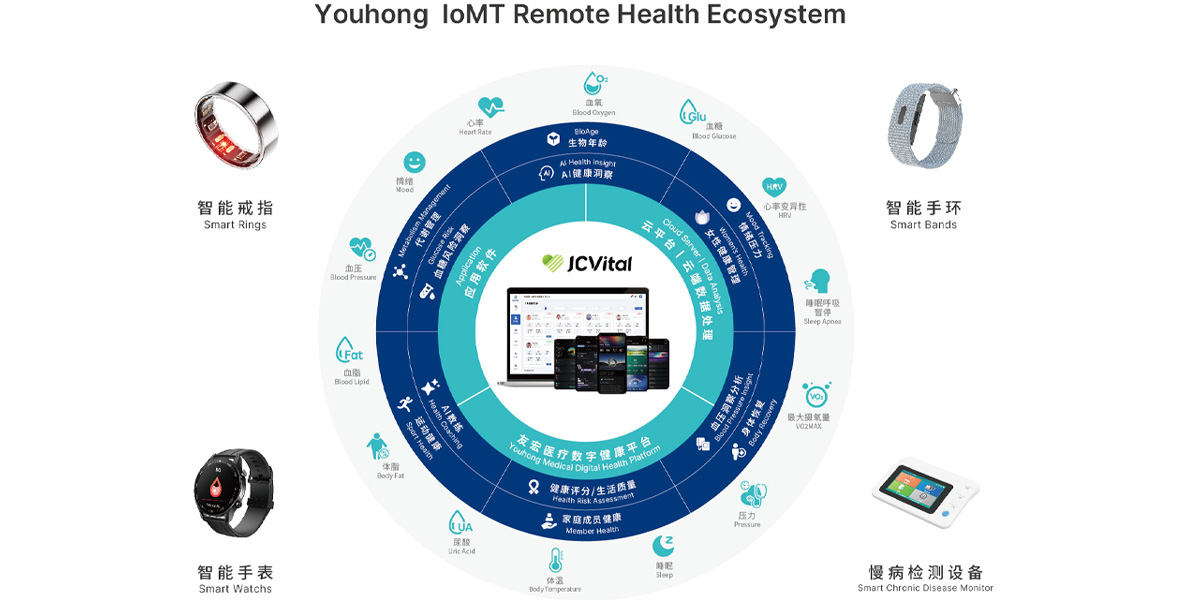
● Accurate health monitoring: Medical-grade sensors with patented algorithms.
● Seamless data connection: Real-time IoT transmission.
● Remote health management: Cloud-based data collection and analysis.
● Personalized care: AI-powered risk assessment and lifestyle recommendations.
2. “Early Detection, Early Warning, Early Intervention” Solution
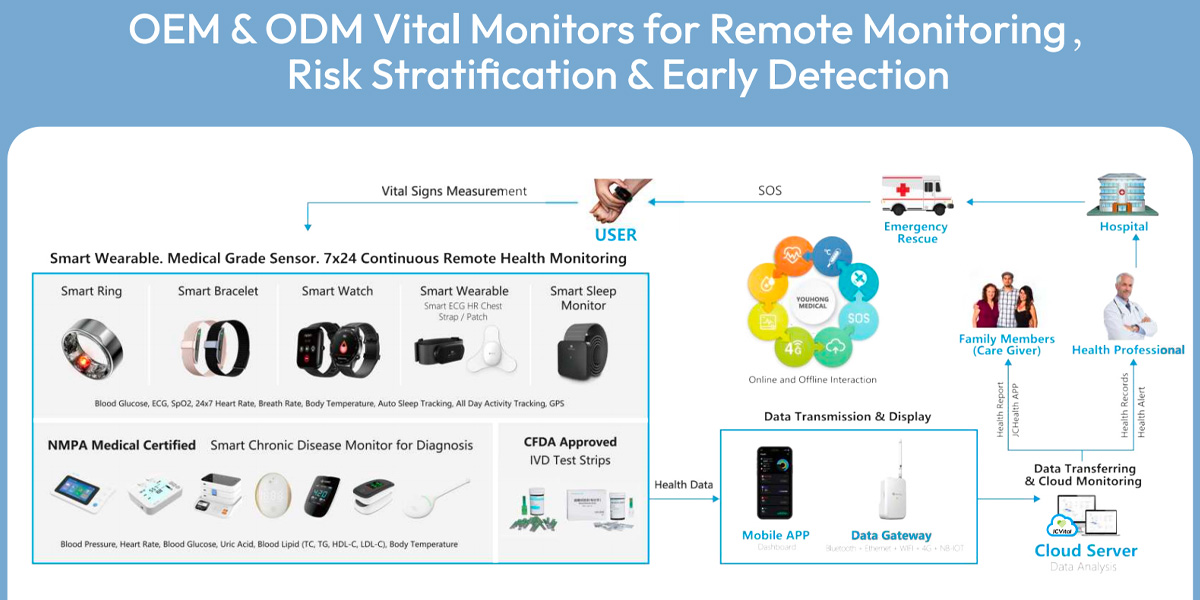
● Lightweight and comfortable 24/7 wear.
● High-precision measurement of SpO₂, HRV, blood pressure, glucose, and sleep quality.
● AI-based risk prediction for hypertension, diabetes, and cardiovascular diseases.
● Remote health management platforms for hospitals, nursing homes, and family caregivers.
● Full OEM/ODM customization for institutions, insurers, and health brands.
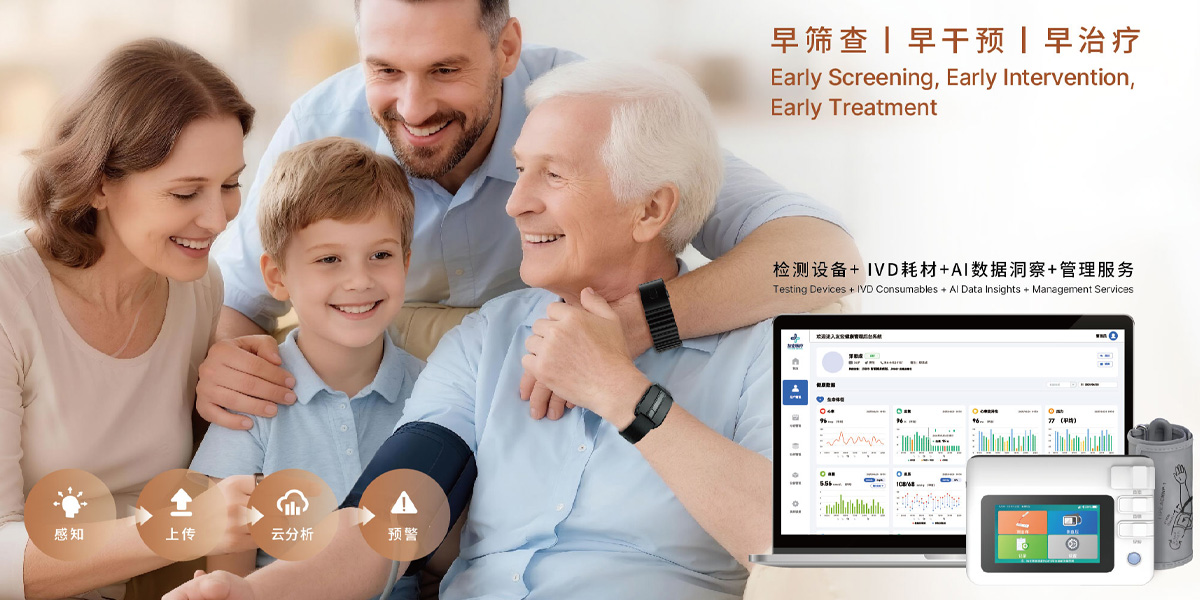
Combines biosensors + AI to deliver actionable health insights:
● Heart rate & HRV → stress & arrhythmia detection.
● Blood oxygen (SpO₂) → early sleep apnea detection.
● Blood pressure → continuous hypertension monitoring.
● Non-invasive glucose → diabetes management.
● Sleep monitoring → early identification of cardiovascular and cognitive risks.
| Aspect | Traditional Elderly Care | Smart Elderly Care |
| Health Monitoring | Periodic checkups | Real-time, continuous monitoring |
| Data Collection | Fragmented, delayed | Cloud-based, real-time, traceable |
| Chronic Disease Mgmt | Manual follow-ups | AI-based risk prediction & alerts |
| User Experience | Low compliance, bulky | Comfortable, wearable, discreet |
| Cost Efficiency | High caregiver workload | Long-term lower cost, data-driven |
Smart elderly care fills the gap by enabling proactive, data-driven health management that benefits both patients and healthcare providers.
Market Outlook for Smart Elderly Care
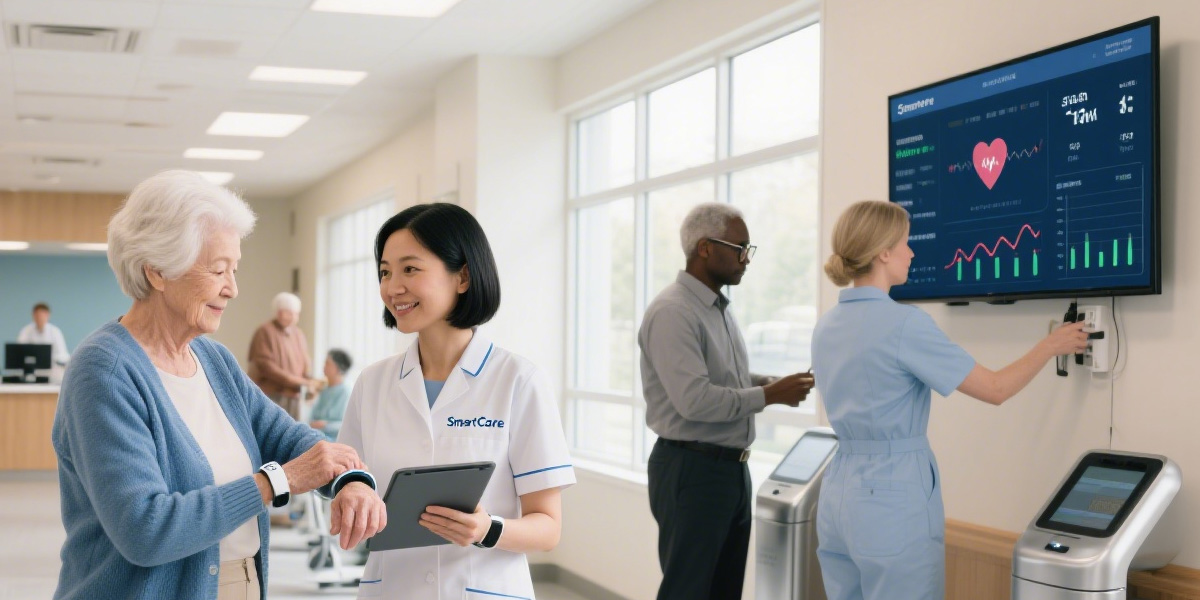
● China: According to Toubao Research Institute, the smart elderly care industry will grow from 10.2 trillion RMB in 2023 to 21.1 trillion RMB in 2027 (CAGR: 19.8%).
● Global: Grand View Research predicts the digital health market will reach $1.5 trillion by 2030 (CAGR: 27.7%).
● Hardware Devices: Smart rings, bands, watches, blood pressure monitors, ECGs, smart pillboxes, sleep trackers.
● Platform Services:
To C: Health management apps, subscription services.
To B: Nursing homes, community elderly care centers.
To G: Government-led regional elderly care projects.
● Data Services: De-identified health data supporting pharma research, insurance risk modeling, and public health policies.
● Integrated Solutions: Combining hardware, platforms, and professional services will dominate the market.
Conclusion
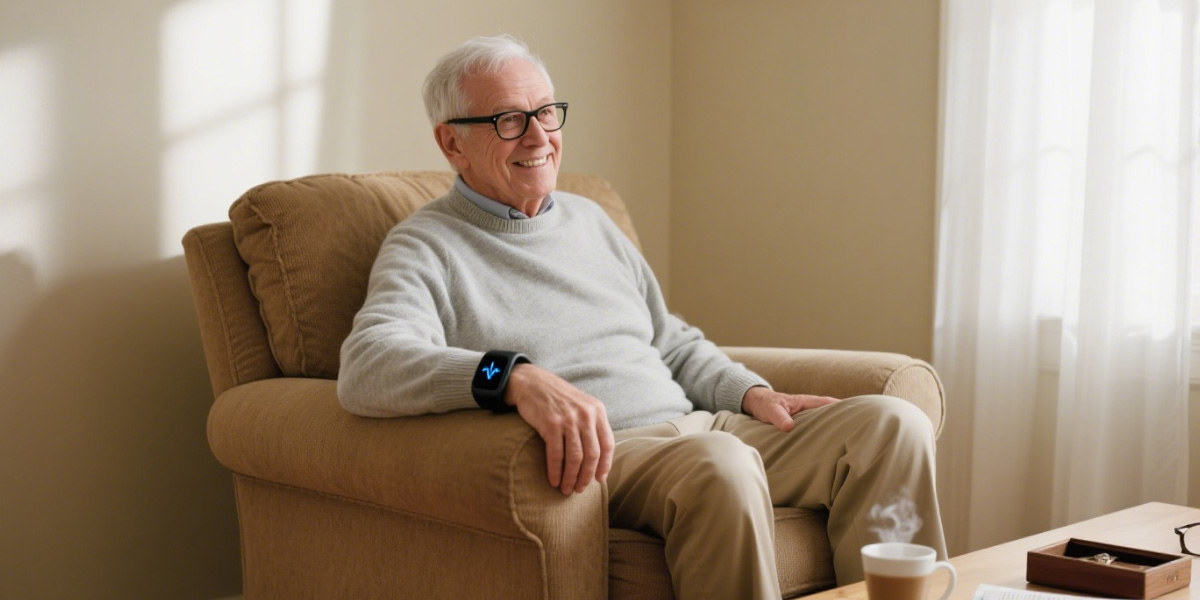
In the context of aging populations, rising chronic diseases, and healthcare workforce shortages, Smart Elderly Care is no longer optional—it’s the future.
By integrating wearable devices, AI-powered risk analysis, and IoMT platforms, companies like J-STYLE are setting new standards for elderly healthcare. These solutions not only improve seniors’ quality of life but also reduce long-term costs for families, institutions, and healthcare systems.
The future of elderly care will be smart, data-driven, and human-centered—and wearable technology is at the heart of this transformation.
